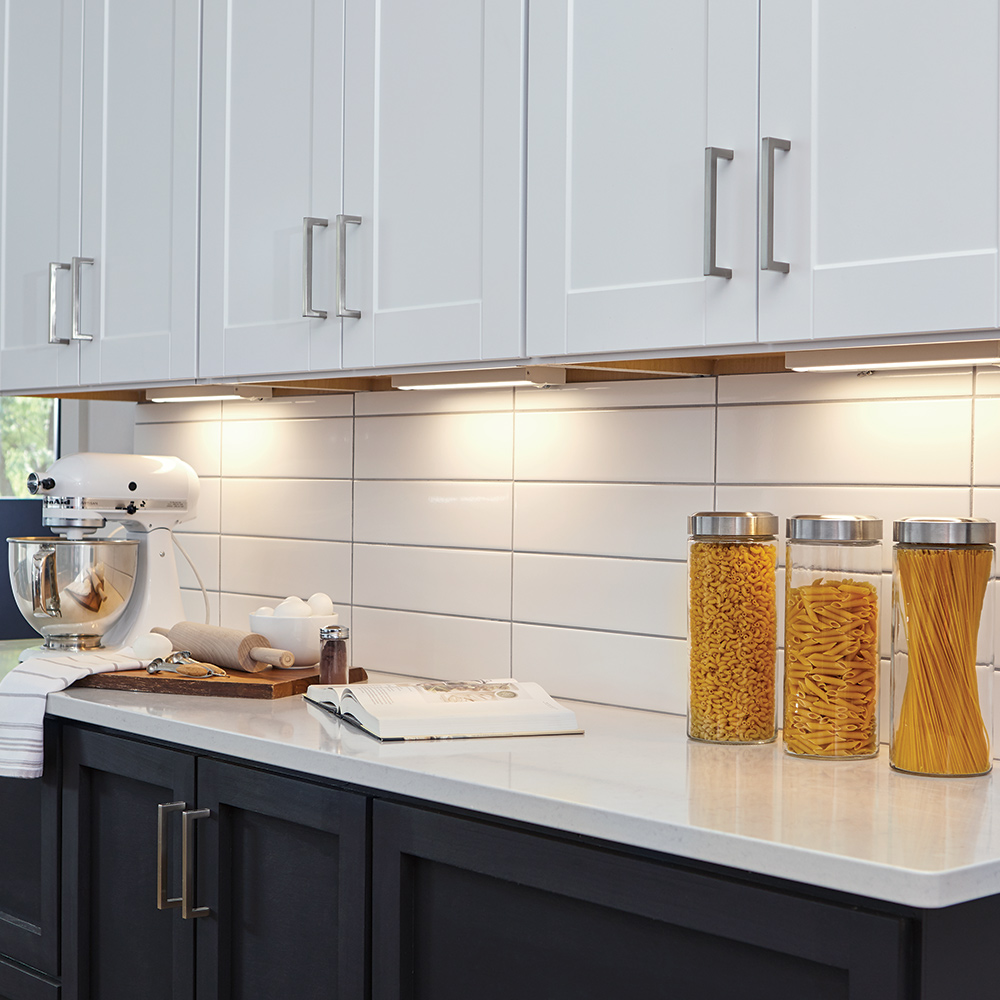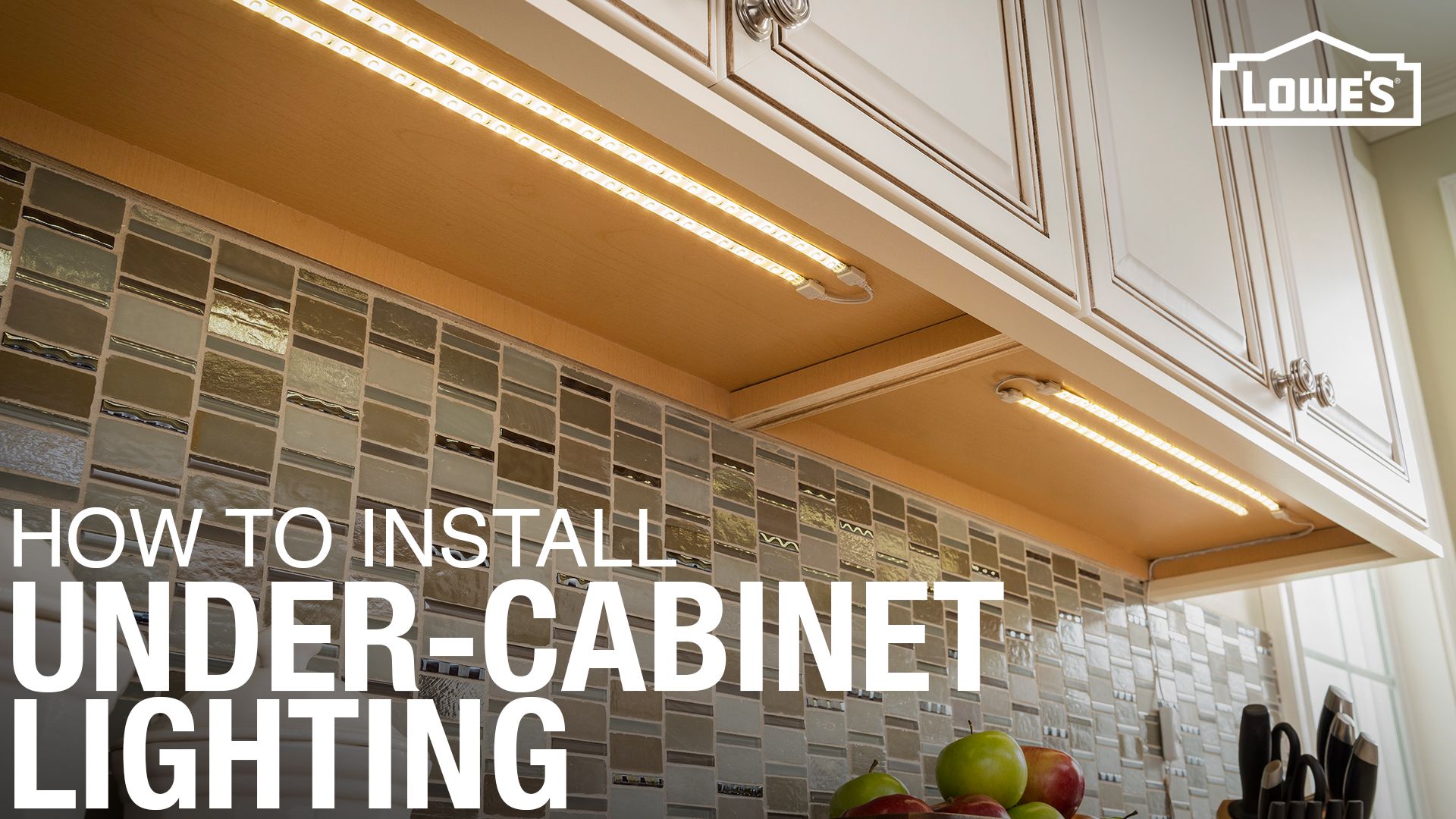Understanding Rough-In for Under Cabinet Lighting

Rough-in for under cabinet lighting is like the foundation of a house, it sets the stage for the rest of the project. It involves planning and preparing the electrical wiring and mounting points for your under cabinet lighting fixtures. This is super important because it ensures that your lighting is properly installed and functioning.
Types of Under Cabinet Lighting Fixtures and Their Compatibility with Rough-In
The type of under cabinet lighting fixture you choose will influence the rough-in process. You’ll need to consider the fixture’s power requirements, mounting method, and the type of light it emits.
- Hardwired Fixtures: These fixtures are directly connected to the electrical system. They usually require a junction box and a dedicated circuit for installation. This is the most common type of under cabinet lighting, especially for larger kitchens.
- Plug-In Fixtures: These fixtures are plugged into a standard electrical outlet. They are easy to install and can be a good option for smaller kitchens or for temporary lighting. However, they might not be suitable for high-powered fixtures.
- Battery-Powered Fixtures: These fixtures are powered by batteries and do not require any electrical wiring. They are ideal for temporary lighting or for areas where hardwiring is not feasible. However, battery-powered fixtures typically have limited run time and brightness.
- Wireless Fixtures: These fixtures are powered by rechargeable batteries and use wireless technology to communicate with a remote control or smartphone app. They offer flexibility and convenience, but they might require regular charging.
Planning the Rough-In: Rough In For Under Cabinet Lighting

Alright, so you’ve got your under-cabinet lighting sorted, and now it’s time to get those wires in place. This is where the rough-in comes in – it’s basically the groundwork for your lighting setup. Think of it like laying the foundations for a house, except instead of bricks, you’re dealing with wires.
Determining the Placement of the Lighting
The first thing you need to do is figure out where you want your lights to go. This is where it gets a bit more specific, as there are a few things to consider.
- Cabinet Size: The size of your cabinets will dictate how many lights you need and how far apart they should be. You don’t want to end up with a bunch of lights clustered together or, worse, a big gap in the middle of your cabinet where there’s no light.
- Lighting Effect: Think about the kind of lighting effect you want to achieve. Do you want bright, even illumination or something more subtle and atmospheric? This will help you decide on the type of lights and how they’re positioned.
- Placement: Do you want the lights under the cabinet, or maybe mounted on the side? This will affect the wiring and the overall look of the setup.
Designing the Wiring Layout
Once you’ve got a good idea of where the lights will go, you need to plan out the wiring. This involves deciding where the electrical box will be located, how the wiring will run, and where the switch will be.
- Electrical Box Location: This is the starting point for your wiring. You’ll need to choose a location that’s easily accessible and close to the power source. It’s usually best to place it in a concealed area, like behind a cabinet or inside a wall cavity.
- Wiring Route: You’ll need to plan the path of the wiring from the electrical box to the lights. This might involve running the wires along the underside of the cabinets, inside the wall cavity, or through the ceiling. The best route will depend on your specific setup and the layout of your kitchen.
- Switch Placement: Consider where you want the switch to be located. It’s usually best to place it within easy reach and in a location that makes sense for the lighting setup. For example, if you’re installing under-cabinet lights, the switch might be placed on the wall next to the cabinet or on the underside of a nearby countertop.
Measuring and Marking
Now it’s time to get out your tape measure and marking pencil. You need to accurately measure and mark the location for the rough-in. This will ensure that everything lines up perfectly when you install the lights.
- Mark the Electrical Box Location: Use your tape measure to determine the exact location for the electrical box. Mark the location on the wall or ceiling using a pencil.
- Mark the Switch Location: Do the same for the switch location, marking it on the wall or countertop.
- Mark the Light Fixture Locations: Mark the location for each light fixture on the underside of the cabinet. Make sure to leave enough space between each light fixture, depending on the size of your cabinets and the desired lighting effect.
Remember, accuracy is key when it comes to the rough-in. A little extra time spent measuring and marking will save you a lot of headaches down the line.
Executing the Rough-In

Right, so you’ve got your plan sorted and you’re ready to get stuck in. Let’s talk about the nitty-gritty of actually running the electrics for your under cabinet lighting.
Running Electrical Wiring
This is where things get a bit more technical. You need to make sure you’re using the right type of wire and running it safely. It’s a good idea to check with your local building codes to make sure you’re following the rules.
- Choosing the right wire: You’ll need to use a wire that’s rated for the amount of power your under cabinet lighting will use. A good option is 14/2 gauge wire, which is typically used for low-voltage lighting. Make sure the wire is insulated and has a ground wire.
- Running the wire: You’ll need to run the wire from the power source (usually a junction box) to the location of your under cabinet lighting. It’s important to keep the wire hidden and protected from damage. You can use wire staples, conduit, or even run the wire inside the walls (if you’re comfortable with that).
- Protecting the wire: You need to make sure the wire is protected from getting damaged or pinched. You can use staples, conduit, or even run the wire inside the walls. If you’re running the wire inside the walls, make sure to use a conduit to protect it from getting pinched or damaged.
Installing Junction Boxes
Junction boxes are essential for connecting different parts of your electrical system. They provide a safe and organized way to connect wires.
- Choosing the right junction box: You’ll need to choose a junction box that’s big enough to hold all the wires you need to connect. It’s also important to choose a box that’s rated for the type of wire you’re using.
- Installing the junction box: You’ll need to install the junction box in a location that’s accessible and safe. It’s a good idea to install the box on a stud for added support.
- Connecting the wires: You’ll need to connect the wires to the junction box using wire connectors. Make sure to use the correct type of wire connectors for the type of wire you’re using.
Connecting the Wires
Once you’ve got your junction boxes installed, you need to connect the wires to the lighting fixtures.
- Connecting the wires: You’ll need to connect the wires to the lighting fixtures using wire connectors. Make sure to use the correct type of wire connectors for the type of wire you’re using.
- Stripping the wire: You’ll need to strip the insulation off the ends of the wires before you can connect them. Make sure to strip just enough insulation to expose the bare wire.
- Twisting the wires: You’ll need to twist the wires together before you connect them to the wire connectors. Make sure to twist the wires tightly so that they make a good connection.
- Securing the wire connectors: You’ll need to secure the wire connectors to the wires to ensure a good connection. You can use wire nuts or other types of wire connectors.
Securing the Wiring, Rough in for under cabinet lighting
You’ve got the wires connected, but now you need to make sure they’re secure and safe.
- Stapling the wire: You can use staples to secure the wire to the walls or joists. Make sure to use staples that are rated for the type of wire you’re using.
- Using conduit: You can use conduit to protect the wire from damage. Conduit is a type of pipe that can be used to run the wire through walls or ceilings.
- Running the wire inside the walls: If you’re comfortable with it, you can run the wire inside the walls. This is a more permanent solution, but it can be more challenging.
Safety Precautions
Safety first, mate! Remember, you’re dealing with electricity, so it’s important to take safety precautions.
Always disconnect the power before working on any electrical wiring.
- Use the right tools: Make sure you’re using the right tools for the job. Use a voltage tester to make sure the power is off before you start working.
- Be careful with the wire: Don’t let the wire get pinched or damaged. Make sure to use staples, conduit, or other methods to protect the wire.
- Don’t work alone: It’s always a good idea to have someone else around in case of an emergency.
Rough in for under cabinet lighting – Just like planning the electrical rough-in for under cabinet lighting is essential for a functional kitchen, choosing the right bedding color is crucial for a harmonious bedroom. A calming blue bedroom, for instance, can be enhanced by various bedding options, and you can find some great ideas on blue bedroom walls what color bedding.
Similarly, ensuring the electrical rough-in for your under cabinet lighting is well-planned will make the final installation smoother and more efficient.
Roughing in for under cabinet lighting is a crucial step in any kitchen remodel. It allows you to strategically plan for the placement of these lights, which can be especially helpful in a space like a grey walls white trim bedroom where you want to create a welcoming and inviting atmosphere.
By carefully considering the location of your rough-in, you can ensure that your under cabinet lighting enhances the overall aesthetic of your space and provides the perfect level of illumination for any task at hand.